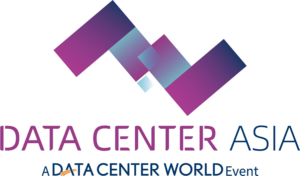In an era where digital infrastructure powers nearly every aspect of modern life, managing data centers efficiently has become non-negotiable. Enter Data Center Infrastructure Management (DCIM), an essential tool that connects IT and facilities teams, enhancing the core of our digital landscape: the data center.
As demands for speed, scalability, and energy efficiency intensify, understanding DCIM is essential. Let’s explore what DCIM is and how this technology is reshaping data center management in 2025 and beyond.

Key Components of a DCIM System
A Data Center Infrastructure Management (DCIM) system integrates hardware monitoring devices with analytical software to optimize data center operations. It relies on distributed sensors, precision power meters, and instrumented rack systems to collect real-time data on power consumption, environmental conditions, and equipment status.
The software processes this data to deliver core functionalities:
- Asset Tracking & Lifecycle Management: Maintains an up-to-date inventory of IT and facility assets, tracking their deployment, utilization, and retirement.
- Real-Time Monitoring: Continuously measures power draw, temperature, humidity, and airflow to ensure operational stability.
- Power & Cooling Optimization: Analyzes energy usage patterns to improve efficiency and prevent thermal imbalances.
- Capacity Planning: Projects future infrastructure needs based on historical trends and workload forecasts.
Additionally, DCIM systems provide:
- Data Visualization: Dashboards and reports consolidate complex metrics into actionable insights.
- Remote Management: Enables administrators to adjust settings and respond to alerts from any location.
By automating infrastructure monitoring and control, DCIM enhances reliability, reduces energy waste, and supports scalable data center growth.
Benefits of Using DCIM Solutions
DCIM (Data Center Infrastructure Management) solutions optimize data center management by improving operational efficiency, reducing costs, and enhancing system reliability. These tools deliver measurable benefits across four key areas:
- Energy Efficiency & Cost Reduction
DCIM software monitors power usage effectiveness (PUE) and cooling performance metrics in real-time. By identifying underutilized equipment and optimizing airflow configurations, organizations achieve measurable reductions in energy consumption without compromising operational capacity, directly lowering both utility expenses and environmental impact.
- Proactive System Reliability
Continuous monitoring of hardware health and environmental conditions allows early detection of anomalies. Centralized dashboards provide real-time visibility into infrastructure status, enabling rapid response to potential failures. Predictive analytics track equipment degradation patterns, permitting scheduled maintenance before critical failures occur. This approach minimizes downtime and reduces mean time to repair (MTTR) through targeted troubleshooting.
- Data-Driven Capacity Planning
DCIM tools map resource utilization trends and dependencies across physical/virtual assets. By analyzing historical and real-time data on server loads, storage consumption, and network traffic, managers can strategically deploy new equipment, right-size infrastructure investments, and avoid redundant purchases. This prevents both underutilization and performance bottlenecks during scaling.
- Compliance Automation
Finally, DCIM solutions aid in regulatory compliance and audit readiness. The detailed documentation and reporting features of DCIM help organizations in complying with industry standards and regulatory obligations related to data center operations, security, and environmental impact. This makes audits easier and lowers the chances of facing non-compliance fines.

DCIM Trends & Challenges in 2025
As data center environments grow more distributed and dynamic, DCIM systems are rapidly evolving. Here are the biggest trends and challenges shaping the landscape this year:
- AI-Driven Automation
Modern DCIM tools integrate AI and machine learning to predict failures, optimize cooling, and automate decision-making. These technologies help data centers run more autonomously, efficiently, and cost-effectively.
- Sustainability at the Core
With rising pressure from regulators and investors, DCIM now includes carbon tracking, renewable energy metrics, and support for sustainable cooling methods like liquid cooling and heat reuse.
- Edge and Micro Data Centers
The explosion of edge computing requires DCIM tools that can scale across remote, unmanned sites. Features like remote monitoring, zero-touch provisioning, and lightweight architecture are now essential.
- Managing Hybrid and Multicloud Environments
As workloads shift across on-premise, colocation, and cloud environments, unified visibility is key. The latest DCIM platforms offer multi-tenant dashboards and API integration to orchestrate complex hybrid setups.

Join Data Center Asia 2025: Discover the Future of DCIM
Ready to see how DCIM is powering Asia’s digital future? Join us at Data Center Asia 2025, a tri-nation event series hosted across Hong Kong, Indonesia, and Malaysia.
At DCA 2025, you’ll gain front-row access to:
- The latest DCIM software and automation tools
- Insights from IT and facility leaders on scaling infrastructure
- Region-specific solutions for energy management and sustainability
Whether you’re optimizing hyperscale deployments or enabling edge operations, DCIM is your competitive advantage, and DCA is your gateway to what’s next.
Register now and join us experiencing the tools and technologies driving Asia’s digital transformation!
